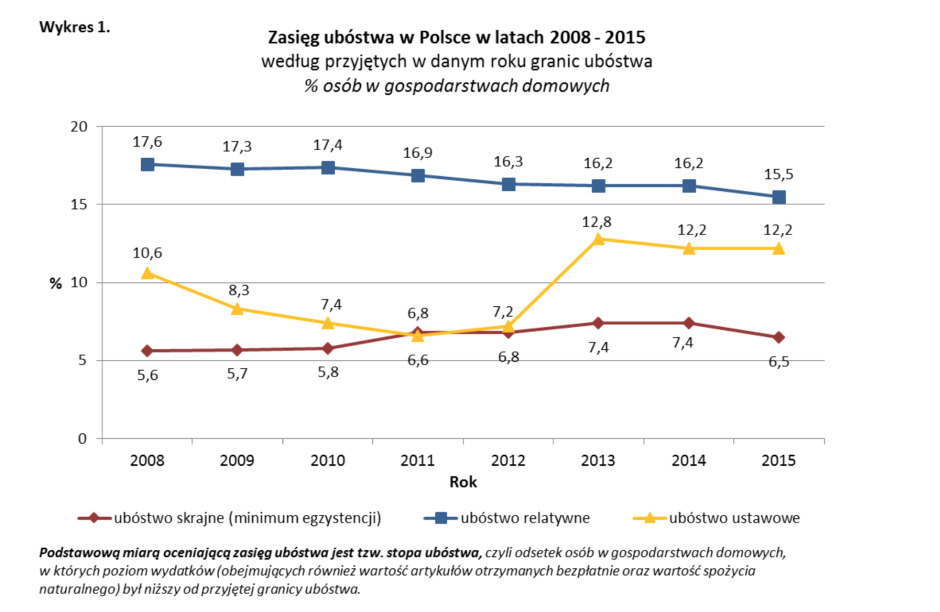In 2015, the extreme poverty experienced every fifteenth person, while relative poverty almost every sixth – signaled in its latest report GUS. This problem is most affected villages where coverage extreme poverty was almost three times higher than in cities.
The most difficult situation were those living in households living on the so-called. other non-profit sources (extreme poverty rate of approx. 18 per cent.), including primarily in households whose income accounted for social benefits other than pensions (approx. 23 per cent.) – the report says.
More than average risk of poverty were members of the farmers’ households (approx. 15 per cent.) and households living mainly from rent (approx. 11 per cent.).
ZR & oacute; DLO: Shutterstock the greatest demand for employee & oacute; to report companies that produce
Every third company in Poland had in the last months of trouble finding … see more »
the lowest percentage of people at risk of poverty was recorded in households whose main source of income is self-employed – this group at risk of absolute poverty was at the Thirty-third person (approx. 3 per cent.).
Who is at risk?
As the GUS, due to the type of household, the group most at risk of poverty were families with many children.
In 2015, year below the minimum subsistence lived at the eleventh person in households of married couples with three children, and every sixth person in the households of married couples with four or more children.
Those forming parent families were in a relatively better situation.
the risk of extreme poverty for single-parent families in total amounted to less than 7 percent. He noted, however, GUS, the situation of single-parent families is diverse – in the case of single parents with more children poverty risk level was higher.
In the countryside more
In 2015, the range of extreme poverty in rural areas was almost three times higher than in cities.
The difference is particularly pronounced when the situation in the country compared with the the situation in the largest cities (500 thousand. inhabitants or more). The extreme poverty lived in 2015 nearly 4 percent. urban population (from approx. 1 per cent. in the largest cities, to approx. 5 per cent. in cities with less than 20 thousand. inhabitants).
In the countryside the proportion of people living below the subsistence minimum was over 11 percent.
the range is reduced
In 2015, observed a slight decrease in the rate of extreme poverty and the rate of relative poverty. In both cases, the decrease in relation to 2014 years did not exceed 1 p. Percent.
In 2015, the extreme poverty experienced every fifteenth person (6.5 per cent. Of households) in Poland, while relative poverty almost every sixth person (15.5 percent.). On the other hand, the poverty rate remained legal in the years 2014-2015 at the same level, reaching a value of approx. 12 percent.

Source: GUS Poverty range in Poland in the years 2008-2015
The most significant improvement observed among farm households of people living on unearned sources (other than pensions), among large families (4 or more dependent children) and among the inhabitants of the smallest towns with a population exceeding 20 thousand.
the sharp increase in poverty incidence was observed while in households living from agriculture.
SEE REPORT CENTRAL STATISTICAL OFFICE
guest TVN24 BiS was dr hab. Richard Szarfenberg of the Polish Committee of the European Anti-Poverty Network (17/10/2015):
No comments:
Post a Comment